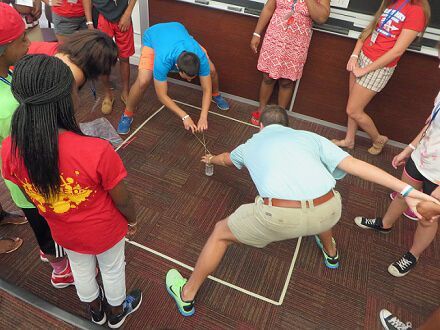Team Building Activities: Fostering Collaboration and Unity
In today’s highly interconnected and fast-paced corporate world, effective teamwork is vital for any organization’s success. A cohesive and collaborative team not only improves productivity but also enhances employee engagement and satisfaction. Team building activities play a crucial role in fostering collaboration and unity among team members. In this article, we will explore the significance of team building activities, discuss their benefits, and provide some examples of popular activities that boost teamwork.
The Importance of Team Building Activities
Team building activities serve as powerful tools for developing trust, improving communication, resolving conflicts, and enhancing problem-solving skills among team members. These activities offer a break from the daily routine and create an environment conducive to building strong interpersonal relationships. Additionally, team building activities provide an opportunity for employees to unwind, have fun, and interact with their colleagues outside the formal work setting.
The Benefits of Team Building Activities
1. Improved Communication: Team building activities encourage open communication and active listening. When team members engage in collaborative tasks or games, they learn to communicate effectively, share ideas, and express themselves confidently.
2. Enhanced Trust and Collaboration: By working together towards a common goal, team members develop trust and establish strong bonds. This trust translates into higher levels of collaboration, as individuals become more comfortable relying on each other’s strengths.
3. Increased Motivation and Engagement: Team building activities promote a sense of belonging and foster a positive work environment. Engaged employees are more motivated to contribute their best efforts and are more likely to stay committed to achieving team goals.
4. Stronger Problem-Solving Skills: Through team building activities, team members develop problem-solving abilities by collectively tackling challenges or puzzles. They learn to think creatively, brainstorm innovative ideas, and find efficient solutions by leveraging the diverse perspectives within the team.
Examples of Team Building Activities
1. Outdoor Adventure Challenges: Engaging in outdoor activities like hiking, ropes courses, or scavenger hunts can help teams bond while building trust and communication skills in a fun and adventurous setting.
2. Team-Building Workshops: These workshops focus on specific areas such as communication, conflict resolution, or leadership development. They provide a structured environment for teams to learn and apply new skills and strategies.
3. Escape Rooms: Escape rooms offer an immersive experience where teams work together to solve puzzles and escape within a time limit. This activity requires effective communication, teamwork, and critical thinking.
4. Volunteering: Engaging in community service projects or volunteering activities not only fosters teamwork but also instills a sense of purpose and fulfillment. Together, team members contribute to a meaningful cause, leading to increased bonding and camaraderie.
5. Team-Building Games: Various games, such as trust falls, relay races, or problem-solving challenges, can be tailored to meet specific team goals. These games promote collaboration, communication, and strategic thinking among team members.
Conclusion
Team building activities are essential for creating a collaborative and united workforce. By improving communication, trust, and problem-solving skills, these activities contribute to a more productive and engaged team. Organizations that invest in team building initiatives are often rewarded with increased employee satisfaction, creativity, and overall organizational success.


